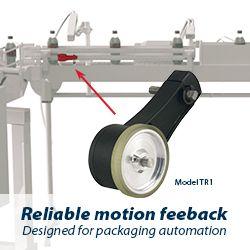Mazor Robotics Announces First Brain Cases Using Its Robotic Platform
Mazor expands clinically validated technology from spine into guided brain operations
Mazor Robotics Ltd., a developer of innovative surgical robots and complementary products, today announced the successful completion of the first robot-guided brain surgical procedures, which were performed with Mazor Robotics' technology. Neurosurgeons Dr. In-Se Kim and Prof. Robert Schönmayr performed the first three cases at HSK Hospital, (Horst Schmidt Kliniken GmbH) in Wiesbaden, Germany.
"As one of the first medical centers globally to adopt robotic technology for spine surgeries, we are very proud to also be the first to expand its use to brain surgeries"
"As one of the first medical centers globally to adopt robotic technology for spine surgeries, we are very proud to also be the first to expand its use to brain surgeries," said Prof. Schönmayr.
"We see great potential in the application of robotic technology to brain and spine surgeries. Our patients have been the best testament to its clinical success," added Dr. Kim.
In addition to its proven applications in spine surgeries, Mazor Robotics' technology is applicable in the brain for biopsies, shunt placements and neurostimulation electrode placement such as for deep brain stimulation (DBS). As a frameless treatment solution for brain procedures, the robot's precision, simplicity and safety profile have the potential to increase patient comfort, improve surgical accuracy and provide a less invasive approach, as well as potentially increase utilization of the installed base.
There are about 25,000 brain biopsies in the United States each year. The DBS placement market is estimated to be several hundred million dollars annually.
"While our core is spine surgery, we are thrilled that our technology can be expanded to improve other surgical procedures," said Ori Hadomi, CEO of Mazor Robotics. "Brain surgeries represent a large market opportunity that is aligned with our current focus on spine. Approximately half of surgeons who currently use Mazor's Renaissance and SpineAssist robots for spinal surgeries are neurosurgeons, the call point for brain surgery. By offering a spine surgery and brain surgery solution, we provide a solution for a greater number of physicians in the typical neurosurgery department."
Regulatory clearance for the brain application is pending in the U.S. and Europe. Upon regulatory clearance, the brain application will be available as an add-on to Mazor's Renaissance system at a separate price point expected early 2013.
About Mazor Robotics
Mazor Robotics Ltd (TASE: MZOR) is dedicated to the development and marketing of innovative surgical robots and complementary products that provide a safer surgical environment for patients, surgeons, and operating room staff. Mazor Robotics' flagship product, Renaissanceâ„¢, is a state-of-the-art surgical guidance system that enables surgeons to conduct spine surgeries in an accurate and secure manner. Mazor Robotics systems have been successfully used in the placement of over 20,000 implants in the United States and Europe. Numerous peer-reviewed publications and presentations at leading scientific conferences have validated the accuracy, usability, and clinical advantages of Mazor Robotics technology. For more information, visit www.mazorrobotics.com.
Featured Product

Model TR1 Tru-Trac
The Model TR1 Tru-Trac® linear measurement solution is a versatile option for tracking velocity, position, or distance over a wide variety of surfaces. An integrated encoder, measuring wheel, and spring-loaded torsion arm in one, compact unit, the Model TR1 is easy to install. The spring-loaded torsion arm offers adjustable torsion load, allowing the Model TR1 to be mounted in almost any orientation - even upside-down. The threaded shaft on the pivot axis is field reversible, providing mounting access from either side. With operating speeds up to 3000 feet per minute, a wide variety of configuration options - including multiple wheel material options - and a housing made from a durable, conductive composite material that minimizes static buildup, the Model TR1 Tru-Trac® is the ideal solution for countless applications.
